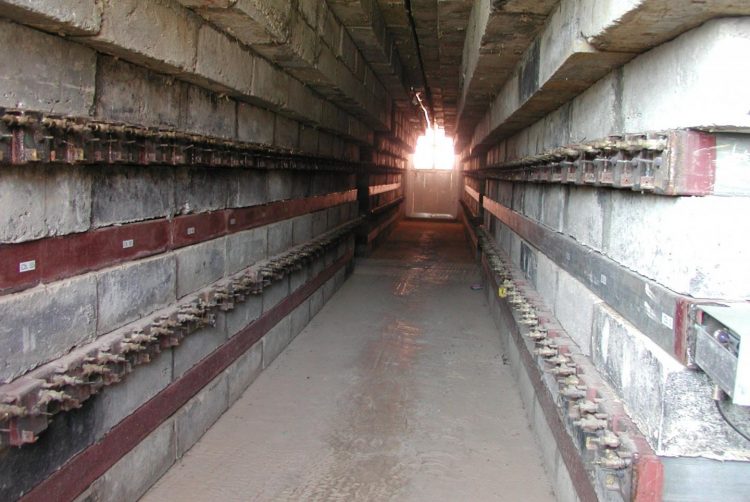GRAPES-3 indicates a crack in Earth's magnetic shield

The GRAPES-3 muon telescope, the largest and most sensitive cosmic ray monitor recorded a burst of galactic cosmic rays that indicated a crack in the Earth's magnetic shield Credit: TIFR
The burst occurred when a giant cloud of plasma ejected from the solar corona, and moving with a speed of about 2.5 million kilometers per hour struck our planet, causing a severe compression of Earth's magnetosphere from 11 to 4 times the radius of Earth.
It triggered a severe geomagnetic storm that generated aurora borealis, and radio signal blackouts in many high latitude countries.
Earth's magnetosphere extends over a radius of a million kilometers, which acts as the first line of defence, shielding us from the continuous flow of solar and galactic cosmic rays, thus protecting life on our planet from these high intensity energetic radiations. Numerical simulations performed by the GRAPES-3 collaboration on this event indicate that the Earth's magnetic shield temporarily cracked due to the occurrence of magnetic reconnection, allowing the lower energy galactic cosmic ray particles to enter our atmosphere.
Earth's magnetic field bent these particles about 180 degree, from the day-side to the night-side of the Earth where it was detected as a burst by the GRAPES-3 muon telescope around mid-night on 22 June 2015. The data was analyzed and interpreted through extensive simulation over several weeks by using the 1280-core computing farm that was built in-house by the GRAPES-3 team of physicists and engineers at the Cosmic Ray Laboratory in Ooty.
This work has recently been published in Physical Review Letters
Solar storms can cause major disruption to human civilization by crippling large electrical power grids, global positioning systems (GPS), satellite operations and communications.
The GRAPES-3 muon telescope, the largest and most sensitive cosmic ray monitor operating on Earth is playing a very significant role in the study of such events. This recent finding has generated widespread excitement in the international scientific community, as well as electronic and print media.
###
Links to articles
Research paper: P. K. Mohanty et al., Phys. Rev. Lett. 117, 171101 (2016),
APS Physics highlight: http://physics.
Media Contact
All latest news from the category: Physics and Astronomy
This area deals with the fundamental laws and building blocks of nature and how they interact, the properties and the behavior of matter, and research into space and time and their structures.
innovations-report provides in-depth reports and articles on subjects such as astrophysics, laser technologies, nuclear, quantum, particle and solid-state physics, nanotechnologies, planetary research and findings (Mars, Venus) and developments related to the Hubble Telescope.
Newest articles

A ‘language’ for ML models to predict nanopore properties
A large number of 2D materials like graphene can have nanopores – small holes formed by missing atoms through which foreign substances can pass. The properties of these nanopores dictate many…

Clinically validated, wearable ultrasound patch
… for continuous blood pressure monitoring. A team of researchers at the University of California San Diego has developed a new and improved wearable ultrasound patch for continuous and noninvasive…

A new puzzle piece for string theory research
Dr. Ksenia Fedosova from the Cluster of Excellence Mathematics Münster, along with an international research team, has proven a conjecture in string theory that physicists had proposed regarding certain equations….



